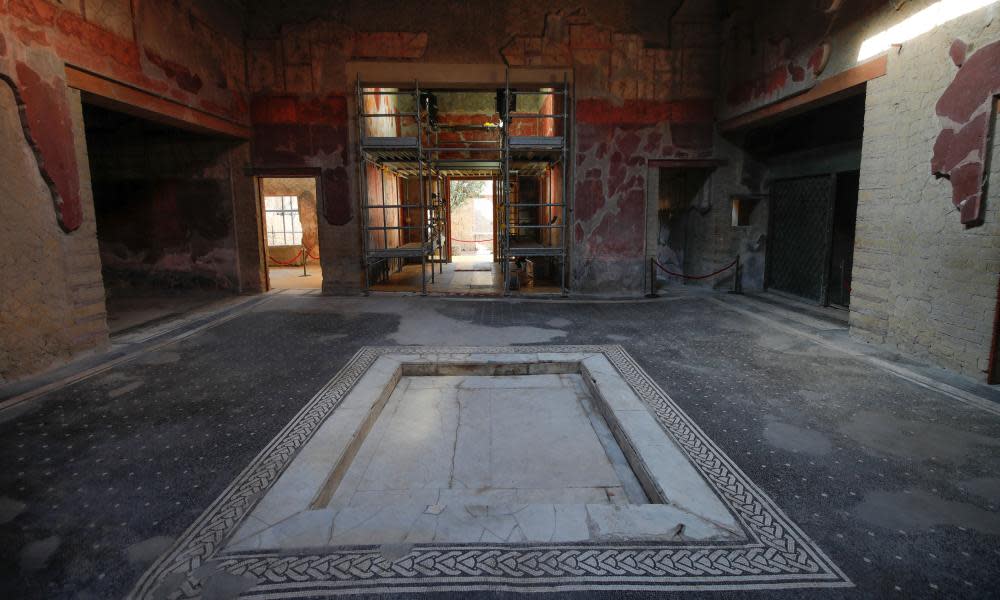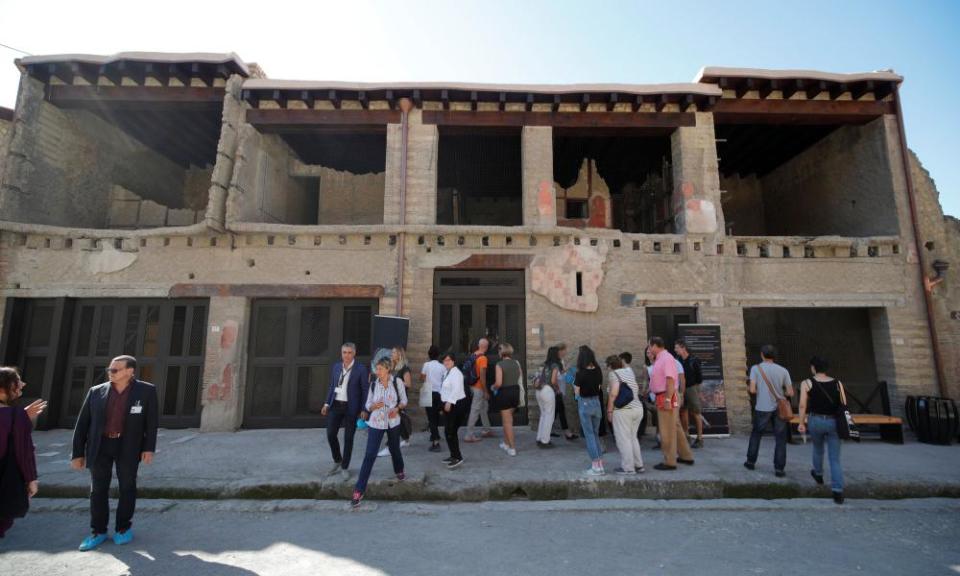'Extraordinary' Roman villa reopened to public in Herculaneum

An ancient Roman house has reopened to the public in the archaeological park of Herculaneum, the town near Naples buried by the eruption of Mount Vesuvius in AD79.
Considered the site’s most noble Roman villa, the House of the Bicentenary had been under restoration for 35 years. The three-storey, 600 sq metre domus, which contains stunning frescoes and mosaic floors, was discovered in 1938, 200 years after excavations at the site began, but closed to the public in 1983 after falling into disrepair.
“This is an important result,” Dario Franceschini, the Italian culture minister, said during a ceremony to open the home on Wednesday. “An extraordinary monument, which had fallen into a state of neglect, is again accessible to visitors.”

The frescoes depicting mythological scenes, one of Venus and Mars and one of Daedalus and Pasiphaë, along with paintings of Dionysian themes, were said to have been common features in the homes of rich people in Herculaneum. The site is much smaller and less well known than neighbouring Pompeii, but the town is said to have been inhabited by wealthier residents and therefore contained a bigger share of lavish houses. It was also a hub for wealthy Romans who ventured there in summer to enjoy its beach.
Herculaneum was buried under about 15 metres (48ft) of volcanic ash until it was rediscovered during the digging of a well in the early 18th century. Most of its residents are said to have escaped before Mount Vesuvius erupted, although 400 well-preserved skeletons were found in 1980.
Excavations have been particularly challenging as the site lies beneath the modern town of the same name. Other discoveries have included organic matter of fruit and bread as well as wooden furniture and ancient scrolls that were carbonised by the heat and ash. Scientists said earlier this month there might still be hope that the fragile scrolls could once again be read thanks to an innovative approach involving high-energy x-rays and artificial intelligence.

There is still a significant portion of Herculaneum, which attracts 500,000 visitors a year compared with Pompeii’s 4 million, that needs to be excavated.
Both sites continue to fascinate archaeologists and the general public. A well-preserved fresco depicting fighting gladiators was unearthed at Pompeii in early October. The discovery was found as archaeologists wrapped up excavations in Regio V, a 21.8-hectare (54 acres) site to the north of the archaeological park that is yet to open to the public. The fresco was found on a wall beneath the stairwell of what was probably a tavern frequented by gladiators and which provided accommodation on a higher floor for them to sleep with sex workers.
Related: The Romans took their graffiti seriously – especially the phalluses | Tom Holland
Excavations have yielded dozens of other discoveries since work began at Regio V last year as part of the EU-funded Great Pompeii Project. A frescoed “fast food” counter, or thermopolium, was found in March and another depicting the mythological hunter Narcissus enraptured by his own reflection in a pool of water was discovered in February. Human remains have also been found, including the skeletons of two women and three children huddled together in a villa, as well as the remains of a harnessed horse and saddle.
Franceschini said money would continue to be invested in both Herculaneum and Pompeii.
“Research is being done at Herculaneum, services have improved and it is a wonderfully attractive place,” he added. “What has been happening at the brightest spot, Pompeii, in recent years has also happened at Herculaneum and we will continue to invest.”

 Yahoo News
Yahoo News 
